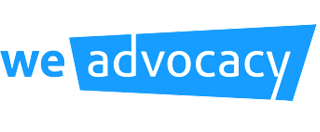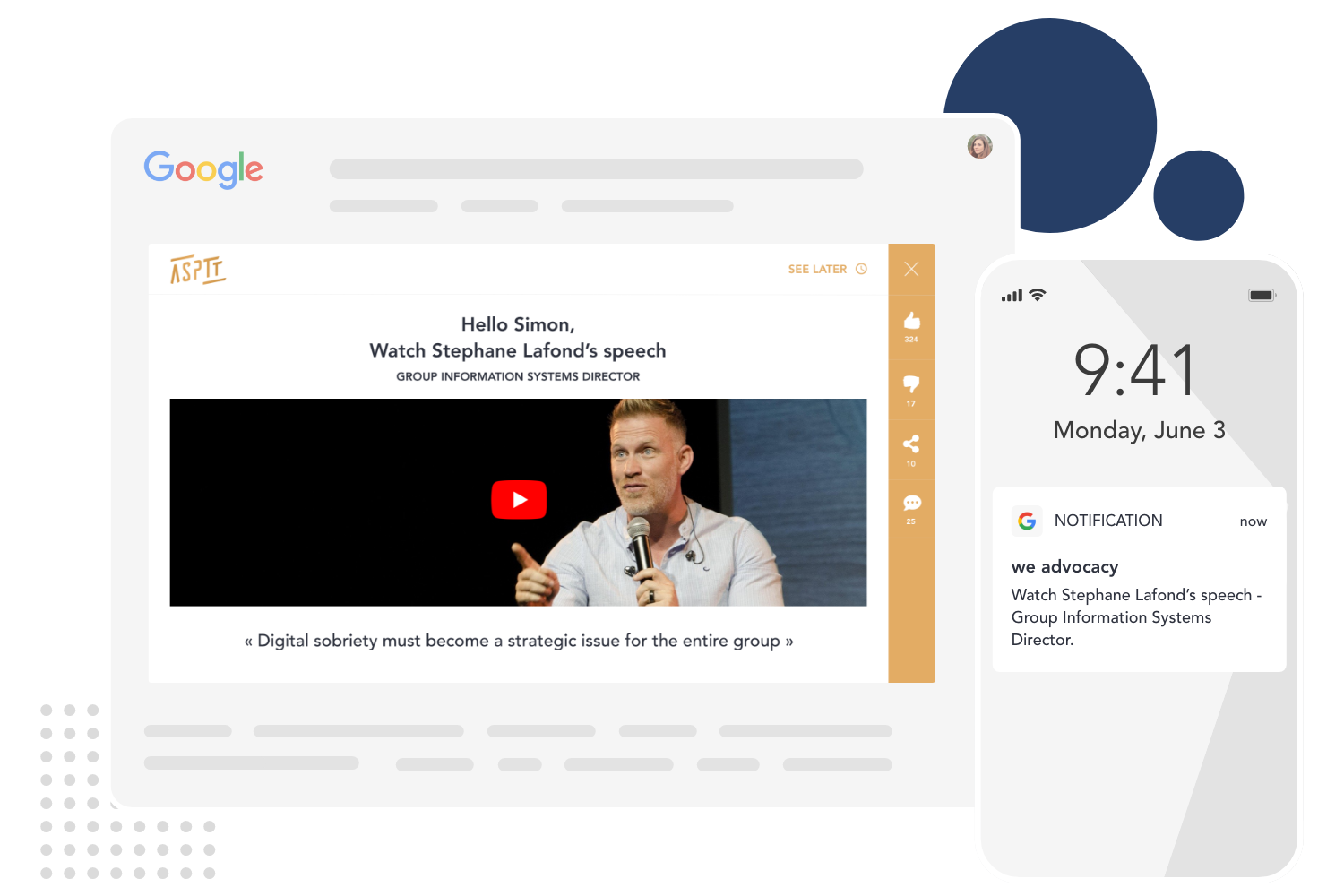
Discover ITW Aliénor Rouffet : Employee advocacy in your corporate communication
“The collaborator is the oil of his company, his fuel, his life energy, without him no business, no production, no business” (Aliénor Rouffet, Engage his employees, a race for the company, the CFPJ blog, February 2019)
We had the chance to interview Aliénor Rouffet, founder of “La Part des Anges”, an agency specializing in consulting, coaching and training in business communication, she also took an interest in employee ambassador initiatives and delivers here his vision on the subject.
We Ad: How does the employee advocacy approach fit into a company?
Aliénor R: If you want your company to be engaged by your employees, the first step is to hire them. Employees are often trained to become involved in their business, but we forget to train the company to be hired by its employees.
We forget to train the directors, the managers so that they themselves are hired by their teams. Finally, it’s an adoption story. For example, when we talk about adoption for children, we forget to talk about adoption for parents, whereas it is a real team work. The child is adopted but the parent too. Between the employer and the employee, it’s a little similar …
We Ad: One of the brakes to the approach would come from the managers or superiors of the company who would not necessarily have the necessary knowledge …
Aliénor R: Not necessarily. My point is more to say that we often forget that it is a team work and that it works if there is a symmetry of attention and a symmetry of recognition. An employee who enters into an employee advocacy process recognizes the value of his company so the company must also recognize the value of its employees, in all their diversity, skills and abilities. Because without symmetry, there is no balance. And without balance, it does not work. We can not engage in a viral and free approach, without symmetry of attention. The approach works on a win-win.
We Ad: What are the issues of the employee advocacy process?
Aliénor R: The main challenge is to get out of corporate communication, a smooth speech that is no longer credible today. To leave a sanitized speech is to return to an authentic communication. And who are the actors of authenticity in a company?
These are the collaborators, provided that they are not biased by the pressure of managerial policy, by the pressure of the results and the pressure of a formatted communication.
The challenge is to give back the word to the collaborators to find the authenticity of the ground. The collaborator talks about his experiences, his experience, whether good or bad, it’s part of the game of authenticity.
We Ad: Transparency is a key to internal communication
Aliénor R: Absolutely. It’s like in everyday relationships, you have to be honest and transparent otherwise it does not work. But to achieve this, the company must be seated enough, enough assured about its operation and practices because it will leave the floor a little free to its employees, without control a priori. If we open the pandore box and everyone can talk, we do not really know what will come out. But if everyone is proud of the other, nothing to fear, it does not slip. (to laugh)
We Ad: What are the main benefits for managers?
Aliénor R: It all depends on the type of business you are talking to. For a service provider, it means having a better audience, better credibility, good visibility and finally better offer its services. In any case, the goal is to do business.
In other cases, the employee advocacy approach is part of a collective intelligence approach. The idea is to embark the whole team so that the final result is more relevant with more varied and broader visions.
We Ad: What are the stakeholders of this internal strategy?
Aliénor R: Initially, as in all steps involving change, a sponsor wearing the device is necessary. On this approach, it is generally the HR and communication managers because the implementation remains a communication device. Piloting is often conducted by a pair of HR and communication.
Indeed, to embark employees, to touch and convince them, it is essential to exchange and communicate with them.
We Ad: What are the obstacles to the engagement of a collaborator?
Aliénor R: First, hyper-control messages. The idea of the employee advocacy approach is to let employees speak up to express themselves freely (on social networks, for example). The company seeks cohesion and virality, without prior control. There may be a rebalancing a posteriori if the drivers believe that employees express themselves a little too virulent. The other obstacle is control a priori, before people express themselves. If you restrict their communication too much, you are holding back their word and it goes against the process.
To avoid these pitfalls, it is recommended to put in place an employee advocacy charter. It will set the framework for the process, as a trust contract on which freedom of speech will rest. The charter proposes the channels on which to express themselves, on which social networks, in which internal media, etc.
What can also prevent the operation is the lack of feedback. The process must be accompanied before, during and after. If committed employees give their time, their expertise, their authenticity and they do not receive feedback, it is very disengaging.
Finally, as in any relationship. If there is no return on investment, the relationship never lasts long and it is normal.
And finally, I would say the lack of recognition. When you have employees who voluntarily participate in this process that serves the company, and that at no time we value their individual and collective commitment, it does not work. Valuing employees and teams is not complicated in fact. HR and com teams know how to do it. It’s almost as simple as a thank you! It is also possible to consider gestures of thanks in the form of gift vouchers for example. In any case, this is free of charge on the part of the collaborators, it takes time and if there is no recognition, it is the disengagement.
We Ad: Do you have any other suggestions for managers who want to implement this approach of employee advocacy?
Aliénor R: If you want to engage your employees, put yourself in a position that they engage you too. It is an approach that creates a slightly more balanced managerial relationship because it also allows the manager to get to know his employees better or to know them from a different angle. We leave the prism of annual results to address the human angle. Employees can also reveal themselves during this type of approach. This puts a little humanity in the managerial relations, which are today a little battered. We are driven by results, numbers, performance and we forget a little humanity in relationships. This is a bit why the whole system falls apart elsewhere (laughs).
The great contribution of this approach would be to reclaim interpersonal relationships by putting a little humanity in the results and objectives.
Encore un grand merci Aliénor 👍👍
d’avoir partagé cette vision à travers cette interview et merci pour cette belle collaboration. Nous espérons que cela vous a plu et que cela enrichit vos connaissance sur l’employee advocacy. Pour compléter nous vous conseillons de continuer votre lecture avec l’article : Engager ses collaborateurs, une course de fond pour l’entreprise -> à retrouver ici.
Nous espérons aussi que ce format vous a plu ? Vous pourrez retrouver de nouvelles interviews dans les prochaines communications We Advocacy en suivant notre actualité !
Solution
Internal Communication
Radically change the way you communicate internally and survey your teams regularly and easily.
Solution
Internal Communication
Radically change the way you communicate internally and survey your teams regularly and easily.

